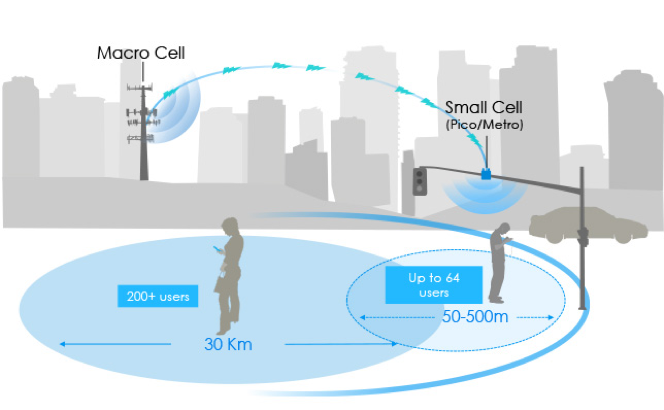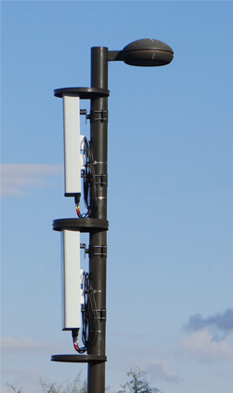Small Cell Attachments Pave the Way for 5G Wireless
 The Internet of Things (IoT) is ushering in a new era of connected homes, smart appliances, and other developments beyond our imagination.
The Internet of Things (IoT) is ushering in a new era of connected homes, smart appliances, and other developments beyond our imagination.
Technology companies and government organizations are working to enable the necessary infrastructure for its promised availability in the early 2020’s.
Over the past decade, 4G wireless technologies resulted in a 4,000-fold increase in data traffic. Mobile data is growing at a 47 percent compounded annual growth rate and 5G will expand leaps and bounds beyond its predecessor. With expected speeds 100-times faster than current networks, 5G could allow consumers to download a full-length, high-definition movie onto their phone in seconds.
However, the current infrastructure would struggle to support the demand. To lay the foundation for the next leap in wireless connectivity, providers are supplementing macrocellular towers with much smaller, and portable cellular base stations called small cells.
What are Small Cells?
Small cells help boost cell tower signals and create better coverage indoors and in remote areas by locating wireless antennas closer to ground level, where users are located. Multiple nodes can deliver more capacity to the same geographic area than one traditional tower would typically cover.
To support 5G technology, the Federal Communications Commission expects that we will require “a 10 to 100-fold increase in small cells and millions of miles of new fiber and other network infrastructure.” Rapidly growing requests for small cell and other attachments are creating new engineering, operational, and administrative challenges for joint use organizations.

Illustration depicts small cell technologies.

Illustration depicts what small cells look like on pole.
Small Cells on Utility Poles
Joint use asset owners and attachers/renters will consider a host of safety and regulatory guidelines when installing small cell. Some of these include:
- Climbing accessibility: Wood poles must be possible to climb. New equipment must be installed on the same side of the pole as existing equipment.
- Minimum clearances: The standard clearance is 40 inches between the lowest power attachment and the uppermost communications attachment. For antennas placed at the top of a pole, they must have 5 feet of clearance above the uppermost power conductor.
- Backhaul solutions: Carriers may use dark fiber (unused fiber already in the ground), lit circuits (fiber in use), cable TV, or a wireless solution to transport voice and data from the base station back to its core. This transport process is called the “backhaul.”
- Attachment guidelines: The pole owner specifies how equipment must be attached and positioned onto an existing pole.
Working with Municipalities and Power Companies: Make-Ready Challenges
The demand for more data and faster wireless service continues to grow and 5G is coming whether we are ready or not.
